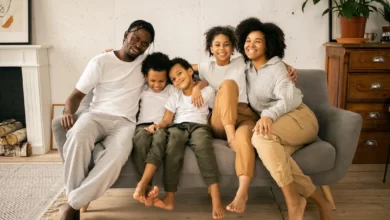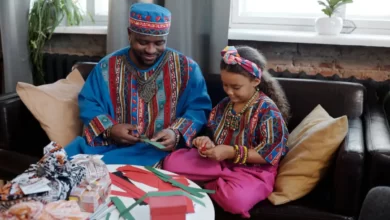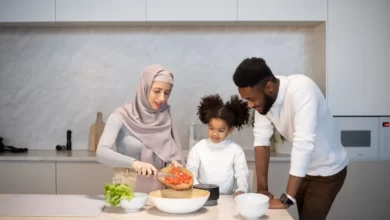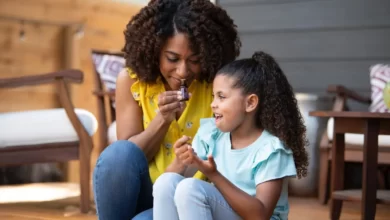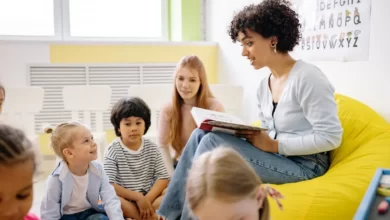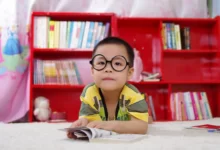Conflict is a natural part of human interaction, and learning how to navigate it is an essential life skill. As parents and caregivers, teaching children effective conflict resolution strategies is crucial for their emotional intelligence and social development. In this blog post, we’ll explore the importance of teaching conflict resolution to kids and provide practical tips for building healthy communication skills that will serve them throughout their lives.
The Significance of Conflict Resolution for Kids
Conflict resolution is about more than just finding a solution to a disagreement; it’s about fostering empathy, active listening, compromise, and respectful communication. By teaching kids these skills from an early age, we equip them with tools to manage conflicts in various settings, from school and friendships to family interactions. Conflict resolution also contributes to building a strong foundation for healthy relationships in adulthood.
Tip 1: Lead by Example
Children learn by observing the behavior of the adults around them. To effectively teach conflict resolution, model healthy communication in your own interactions. Demonstrate active listening, open-mindedness, and the ability to express your feelings without resorting to aggression. When children witness respectful disagreements and their resolution, they’re more likely to internalize these behaviors.
Tip 2: Create a Safe Environment
Establish an environment where your child feels comfortable discussing their feelings and concerns. Encourage open communication by actively listening without judgment. By validating their emotions, you create a space where they are more likely to express themselves honestly and seek solutions.
Tip 3: Teach Active Listening
Active listening is a foundational skill for conflict resolution. Teach your child to listen attentively when others are speaking, rather than formulating their response. Encourage them to ask clarifying questions to ensure they understand the other person’s perspective. This not only promotes empathy but also minimizes misunderstandings.
Tip 4: Use “I” Statements
Teach kids to express their feelings using “I” statements, such as “I feel upset when…” or “I am frustrated because…” This approach focuses on their emotions rather than assigning blame. It allows them to communicate their feelings without making the other person defensive.
Tip 5: Encourage Empathy
Empathy is at the core of effective conflict resolution. Help your child understand that everyone has their own feelings and perspectives. Ask them how they think the other person might be feeling and why. This practice encourages empathy and a more nuanced understanding of the situation.
Tip 6: Practice Problem-Solving
Engage children in collaborative problem-solving. Present hypothetical scenarios or use real-life situations they’ve encountered. Discuss possible solutions together and evaluate the pros and cons of each. This process empowers them to think critically and consider multiple perspectives when finding resolutions.
Tip 7: Teach Compromise
Conflict resolution often involves finding middle ground. Teach kids the art of compromise – giving up something in exchange for gaining something else. Emphasize that compromising doesn’t mean losing; it means finding a solution that works for both parties.
Tip 8: Discuss Anger Management
Anger is a natural emotion, but teaching children healthy ways to manage it is crucial. Teach them techniques such as deep breathing, counting to ten, or taking a break to cool down before responding to a conflict. This prevents impulsive reactions that can escalate disagreements.
Tip 9: Role-Play Scenarios
Role-playing allows children to practice conflict resolution in a safe environment. Act out various scenarios where conflicts arise, and guide them through using the skills they’ve learned. This hands-on approach helps solidify their understanding and builds their confidence in applying these techniques.
Tip 10: Reinforce Positive Behavior
Acknowledge and praise your child when you observe them using conflict resolution skills. Positive reinforcement encourages them to continue practicing these behaviors. Celebrate their efforts in finding peaceful solutions and handling disagreements maturely.
Tip 11: Read Books and Share Stories
Utilize books and stories that address conflict resolution themes. Reading about characters navigating challenges and conflicts provides children with relatable examples and insights into effective problem-solving strategies. Discuss these stories together to reinforce the lessons learned.
Tip 12: Teach Respectful Disagreement
It’s essential to teach children that disagreements are normal and healthy. Help them understand that it’s okay to have different opinions and that expressing those opinions respectfully is crucial. This approach fosters an environment where diverse perspectives are valued.
Conclusion
Teaching conflict resolution to kids is an investment in their emotional well-being and their ability to navigate the complexities of human relationships. By equipping them with effective communication skills, empathy, and problem-solving techniques, you empower them to handle conflicts constructively. Remember that conflict resolution is an ongoing learning process, and the skills they acquire in childhood will serve them throughout their lives. By fostering a culture of healthy communication and empathy, you contribute to their personal growth and their ability to create positive interactions in every aspect of their lives.



